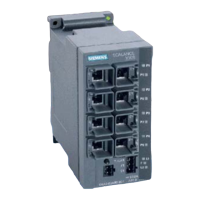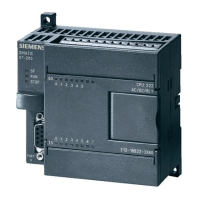Installing your Text Display (TD) Device
2.9 Establishing a Connection for Your TD Device
Text Display (TD) User Manual
44 System Manual, 08/2008, A5E00765548-03
6,(0(16
)
)
)
)
)
)
)
)
6+,)7
(17(5
(6&
6WDQGDUG)DFHSODWH7'&
7H[WGLVSOD\DUHD $UURZEXWWRQV
&RQILJXUDEOHEXWWRQV
DQG6+,)7
(17(5
DQG(6&
6WDQGDUG)DFHSODWH7'&
6,(0(16
7'&
) )
(17(5
(6&
7H[WGLVSOD\DUHD $UURZEXWWRQV
&RQILJXUDEOHEXWWRQV
(17(5
DQG(6&
7'&
0
7H[WGLVSOD\DUHD
$UURZEXWWRQV
&RQILJXUDEOHEXWWRQV
6WDQGDUG)DFHSODWH7'&
)
)
)
)
)
)
)
)
)
)
)
)
)
)
6+,)7
(6&
(17(5
6+,)7(17(5DQG(6&
)
)
6,(0(16
Figure 2-10 Standard TD Keypad for the TD 100C, TD 200C and TD400C
Tip
On an initial setup for the TD 100C, TD 200C, or TD400C, use the default keypad template
shipped with the device to configure baud rates and addresses. Once the TD device has
communicated to the CPU, the TD device will use the custom keypad configuration.
Tip
If you are using a custom keypad that does not support the ENTER and ESC buttons, you
must use the standard keypad to set up the TD device.
To restore the standard TD keypad:
1. Power down the TD device
2. Press and hold the lower right corner (where ENTER key is located on the standard
keypad)
3. Power up the TD device
The default keypad is restored until the TD device is power cycled again.

